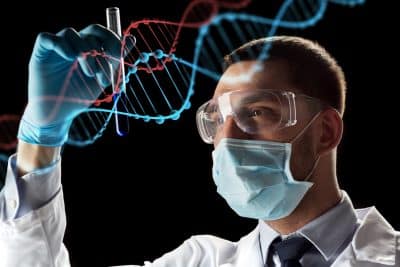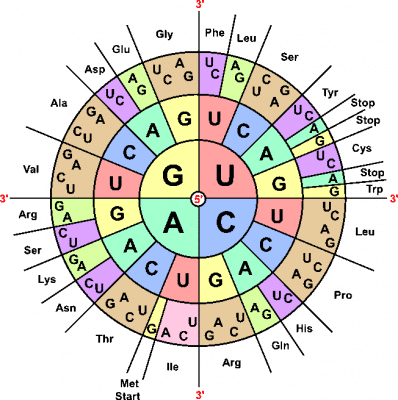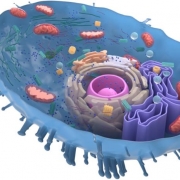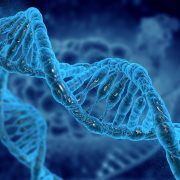Genetics 101
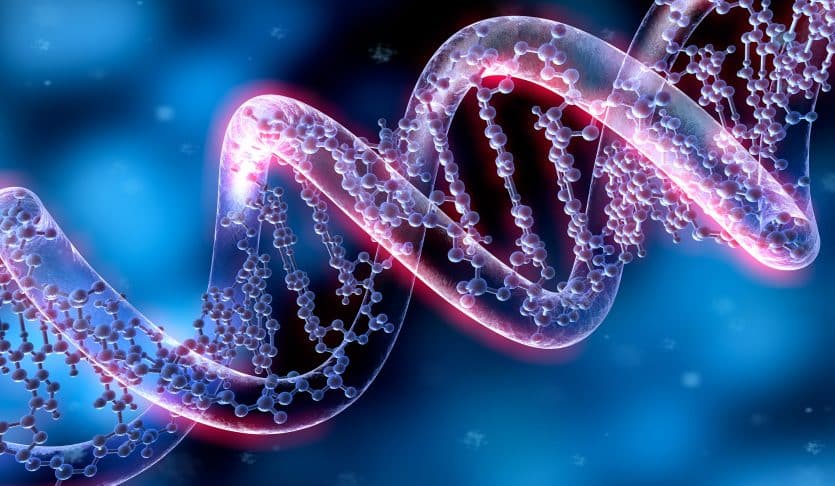
Learning the Language
You’ve probably heard terms like “DNA” and “gene.” Or if you’re really advanced, maybe even terms like “translation” and “heredity.” Or maybe even at the graduate level “SNPs” and “epigenetics.”
If you already know all of these terms, great. You already speak the language of genetics. But maybe you could use a little brushing up on your genetics. Or maybe these terms are completely new to you. No matter what your genetics reading level is, understanding the vocabulary is essential. That’s especially true in the new world of individualized medicine and personalized nutrition. A knowledge of genetics is something you are going to have to keep on top of.
This will be the first part of a four-part series—Genetics 101. You will start by learning the definitions of key genetics terminology. This base of knowledge will help as you get more in-depth.
Once you have mastered genetics vocabulary, you will move on to Genetics 101—The Basics of DNA and Genes. Next, all this information is put in the context of heredity, the theory of evolution, and ancestry. And then you will close out your genetics crash course with the final section, “Genetics and Your Health.” With a new story a month, you’ll have a solid grasp of genetics so you can make informed decisions related to your health.
It’s time to start with the basics.
Common Genetics Terms Defined
Before you dive into the specifics of how your genetics defines who you are, it’s important to understand 26 common terms. They’ll help when you start learning about genetics’ impact on how you look, how your cells work, why your children look and act like they do, and how genetics affects your health outcomes.
Let’s start by defining some terminology that is the center of genetics.
Nucleus: Your nucleus is technically an organelle—a self-contained structure within the cell. Your nucleus contains all of the genetic material you got from your parents, often referred to as your genome or DNA. The job of the nucleus is to protect, organize, and replicate DNA when the cell divides.
Genome: Refers to all of your genetic material as a whole.
DNA: An acronym for deoxyribonucleic acid. DNA is the carrier of all your genetic information. The specific order your DNA is assembled after being inherited from your parents determines your physical appearance and how your cells work.
Nucleotide/Base: These words are used interchangeably to refer to the individual building blocks of DNA and RNA. DNA is made up of four nucleotides/bases: adenine, guanine, cytosine, and thymine. They are often referred to in DNA shorthand as A, G, C, T, respectively.
Base Pair: Chemically and molecularly speaking, DNA is a double-stranded molecule. But it’s also anti-parallel, which means DNA is made up of two identical strands running in opposite directions. Think of it this way: One strand runs “A-to-Z” and the other runs “Z-to-A.”
Each strand binds to the other through a special set of relatively weak chemical bonds. Think of these hydrogen bonds like Velcro. They can bind together when needed, but also pulled apart when needed.
Importantly, one base will only bond with one other base—its compliment. For example, adenine can only pair with guanine (and guanine only with adenine). And only cytosine can pair with thymine (and thymine only with cytosine). These A-G and C-T pairings are called base pairs. This base pairing rule is important because it is at the center of reproduction and cellular division.
Chromosome: The most general way DNA is packaged in the nucleus. Chromosomes organize the large mass of DNA into defined and tightly condensed structures. These help organize and protect DNA. The number of chromosomes varies greatly by organism. They can have as few as one, to a couple hundred, to even more than 10,000 chromosomes. Humans have 23 pairs, or 46, chromosomes.
Gene: A further sub-organization of your genetic material. It is a short, discrete piece of DNA. If DNA is a book, think of genes as being the individual chapters. These chapters of DNA (genes) are the instructions for the cell to make a protein or enzyme. Specifically, a gene tells the cell the proper order to assemble amino acids to build a three-dimensional protein or enzyme structure. Humans have somewhere between 20,000-25,000 individual genes.
Gene Expression: Somewhere within or around a gene—most commonly at the beginning—are special DNA sequences responsible for turning a gene on or off (think of a light switch). Genes can also be constantly on. Their gene products (proteins or enzymes) are constantly being made, usually at a low, consistent level. The two major processes of gene expression—reading a gene and then making a protein—are called transcription and translation, respectively.
Transcription: The process where the cell reads the information contained within a gene. This message is copied into an RNA messenger molecule and sent from the nucleus, out to other parts of the cell.
RNA: An acronym for ribonucleic acid and chemically very similar to DNA. RNA is considered the master messenger. It relays short pieces of information contained in DNA (gene) to other locations within the cell. RNA specifically allows those messages to be turned into the functional units of the cell—proteins and enzymes. The information in RNA is segmented into sets of three nucleotides/bases called a codon.
Codon: A set of three sequential nucleotides/bases in an RNA molecule. The order of the three nucleotides/bases is the code for a specific amino acid. As the codons in RNA are read, the cell begins assembling strings of amino acids—the building blocks of proteins and enzymes. This process is called translation.
Translation: The process where the cell turns the RNA messenger molecule into a protein or enzyme.
Protein/Enzyme: Words often used interchangeably to describe a chain of amino acids chemically bonded together. Once the individual amino acids are bonded together, they fold upon themselves to form final functional products we often refer to as a protein or enzyme. While all enzymes are proteins, not all proteins are enzymes. By convention, scientists refer to a protein as a protein when its function in a cell is static or structural. The word enzyme is used to describe a protein that actively does work (like the enzymes that turn food into energy).
DNA Replication: The act of making an identical copy of DNA. When a cell divides it must also copy—or replicate—its DNA. This happens because the Velcro-like hydrogen bonds can be peeled apart. One strand stays with the old cell. The other strand moves into the new cell. Because of the base pairing rule (A-G and C-T can only pair together), each cell can remake the missing anti-parallel strand. This ultimately makes the DNA double-stranded again. This process can repeat as many times as the cell can divide.
Heredity: The passing on of genetic information to the next, younger generation.
Phenotype: Your physically observable traits based on the sequence of your genes (genotype). Think of things like how you look and how you act.
Genotype: The DNA sequence of your genes.
Dominant Gene: When a dominant and recessive gene compete to be expressed, the dominant gene will win. For example, when a parent with brown eyes (dominant gene) has child with a parent with blue eyes (recessive gene) the child will have brown eyes—the dominant gene wins.
Recessive Gene: Recessive genes are not expressed when in the presence of a dominant gene. However, because you have two copies of each gene, when both of those copies are recessive, a recessive trait can be expressed. A child will have blue eyes when both copies of genes received from the parents are for blue eyes.
Ploid: Refers to the number of chromosomes or pairings of DNA in an organism.
Diploid: “Di” means “two.” When a cell is diploid it has both copies of its DNA. This is the normal state of most of your cells and the DNA is said to be double-stranded. Cells must have its DNA in the diploid state to divide and replicate itself.
Haploid: “Ha” means “half.” When a cell is haploid it only has half (or one) of its copies of DNA. Haploid cells only tend to be reproductive cells like sperm and eggs. This is important because when a sperm cell and egg cell fuse (fertilization), the two half copies of DNA recombine to create a complete, diploid genome. Once this new cell becomes diploid, it can begin to grow and divide.
Epigenetics: It can be considered a second genetic code that lays on top of your primary DNA sequence. This code is made up of a number of chemical signals. There are a number of chemical signals that can modify your DNA sequence or the structures that organize the DNA in the nucleus. Depending on the specific chemical modifications, genes can be turned on or off.
Interestingly, your diet and lifestyle dramatically affect this chemical code (epigenome) and how your genes are regulated. It has also been shown that your epigenetic code is also largely inheritable. That means that depending on how your parents—and even your grandparents—lived their lives affects how your genes are expressed. And how you are living your life will affect your children’s gene expression.
The epigenome is believed to be largely responsible for health outcomes—good or bad—in the next generation. For example, lean, healthy parents tend to have lean, healthy children. However, children of parents with certain diseases can have an increased risk of also getting that disease later in life.
Mutation: The changing of the original DNA sequence. This can happen through a number of different processes like: exposure to environmental chemicals, improper DNA replication, and physical breakage/damage to the DNA.
Ultimately, a mutation affects the function of the final protein/enzyme structure for which it codes. Mutations can have a number of effects on the cell—from no effect, to a beneficial effect, to a detrimental effect. If a mutation doesn’t change the final protein structure or function it is said to be silent.
Beneficial mutations confer improved function or survival to the cell or organism. This is often cited as the basis of evolution or the survival of the fittest. Mutations can also be detrimental. If a change in the original DNA sequence has negative affects to the structure or function of a protein, it can have grave consequences to cellular function. If a negative mutation occurs in an essential location in a gene, protein function with be dramatically affected and ultimately lead to a decrease in survival. Some common negative mutations, in key genes or proteins, can lead to cancer.
Cancer: A disease defined by uncontrolled cellular division. Normally, the cell keeps very tight control of the processes that stop or start a cell from dividing. However, this process can become disrupted. This can happen because of a mutation, exposure to environmental chemicals, physical damage, etc. But it is important to note that not all mutations cause cancer and that not all cancers are the results of mutations. Ultimately, uncontrolled cell division leads to the accumulation of abnormal cells into a growth mass known as a tumor. If this tumor results in impaired functioning to a tissue or organ, tissue and organ failure can follow, resulting in death.
SNP (Single Nucleotide Polymorphism): A mutation in a single DNA base. Because this is a very minor mutation in a gene, SNPs tend to be silent mutations, and rarely lead to cancer. However, when a SNP happens in a critical location in a gene they can affect protein function—either positively or negatively. SNPs have gained popularity in science and medicine. For example, they’re used to help diagnose metabolic deficiencies or determine how a patient might respond to certain medications.
The Basics of DNA and Genes
This is the second part of a four-part series—Genetics 101. If you missed the first part, read Genetics 101—Learning the Language. Starting with the terminology before jumping into this article will help you learn the important vocabulary before getting more in-depth.
Genetics is both incredibly simple and incredibly complicated at the same time. Let’s start with what exactly is genetics? According to Merriam-Webster, genetics is “a branch of biology that deals with the heredity and variation of organisms” and “the genetic makeup and phenomena of an organism, type, group, or condition.”
Put simply, genetics is the study of what makes you both human and unique. And its DNA you have to thank. In fact, every living organism on Earth contains DNA. It’s DNA that makes a bacteria a bacteria, a bird a bird, and makes you human.
DNA’s Only Job is to Store and Share Information
Many think of DNA as being fluid, dynamic, and ever-changing. But in fact, DNA is a static and stable molecule. Whether it’s from stone tools or the inside of ancient bones, it’s possible to collect DNA and study it—even after tens of thousands of years.
An easy way to think of your DNA is like a blueprint to build a house. It conveys a lot of information. But that blueprint cannot build the house itself—it only stores and shares information. It takes an intelligent and coordinated team of workers to construct the actual home. You have the engineer that can read the blueprint, the bosses who direct the workers, and the laborers who are putting everything together.
DNA is doing nothing more than storing and sharing information with the cell. So, you can think of DNA as the blueprint for your cells.
DNA is a Very Large Molecule
DNA is the genetic material contained in every nucleus in your body. And while not every cell has a nucleus—and some cells have more than one—every nucleus has a complete DNA sequence.
In each nucleus, DNA exists as a single (double-stranded) molecule. That is, a very large molecule. Human DNA is between two and three billion bases long. To put that into perspective, if you were to reach inside one of your nuclei, take out the DNA, and stretch it out on a table, it would be three-to-six feet (one to two meters) long.
Another way to illustrate DNA’s size is to estimate its total mass. If you take the average weight of a single nucleotide base, multiple it by two (because it is double-stranded), and then again by two to three billion (the total length of DNA), that’s already a big number. But you’re not done. Now multiply that by the total number of nuclei (or cells that have nuclei) to get the total amount of DNA in a human body.
That number comes to between approximately five grams (0.2 ounces or about the weight of a sheet of paper) to 50 grams (1.8 ounces or about the weight of a chicken egg) of DNA in your body. That’s a lot of DNA.
This also illustrates just how tightly DNA is packed inside of each nucleus. It’s incredible a molecule that big fits inside something so microscopic.
DNA is Highly and Complexly Organized Within Your Nucleus
You are made of trillions and trillions of cells (about 50 trillion to be exact). With the exception of some blood cells, about 75 percent have at least one nucleus. Within that nucleus is your DNA—a complete copy of DNA inside of every nucleus.
How is this possible? Basically, DNA is tied into the tightest of knots. It is wrapped around and folded back on itself numerous times. But this DNA knot is also highly organized and can be (at least partially) untied when the information it’s holding needs to be accessed.
The cell demands the information DNA contains by modifying it—and associated proteins that help organize DNA—with specific chemical signals. Some of these chemical signals last a very short time. Others can be passed from generation to generation. These chemical signals are called your epigenetic code.
Through this epigenetic code, cells regulate what parts of the DNA are turned on or off. This also gives each of the different cell types their unique identity. Even though every cell has a complete copy of DNA, cells only turn on the DNA they need. And they turn off the DNA they don’t. For example, brain cells only turn on brain-cell DNA, liver cells only turn on liver-cell DNA, skin cells only turn on skin-cell DNA, and so-on-and-so-forth.
DNA is the Instructions for Your Cells to Make Protein
So, how does DNA work to tell the cell what to make?
DNA is made up of four basic building blocks called bases—adenine, thymine, guanine, and cytosine (abbreviated A, T, G, C, respectively). Here is where it gets really amazing. These four DNA bases repeat over and over again, but in a unique order that gives you your individuality.
These bases (A, T, G, C) are ultimately responsible for everything you are: your height, how you look, your athletic ability, and how your cells, tissues, and organs function.
How can this be?
The easiest way to think about it is to relate it to the way you’re reading the words on this page. It starts with the alphabet. Then those letters are organized into words. It just so happens the “DNA alphabet” only consists of four letters—those As, Ts, Gs, Cs. When these four bases are organized in a specific order, they are the words—or instructions—for the cell to make protein. These can be structural proteins that hold the cell together. Or they can be enzymes—proteins that do work within the cell.
Another amazing fact is that every word in the “DNA dictionary” is only three letters—or bases—long. These three-letter words are called a codon. As the cell reads each codon, it knows exactly what amino acids (the building blocks of protein) to put together and in what order. It also knows how many amino acids to use.
In that codon, there are “start here” and “stop here” signals. For example, some proteins only require 500 bases to convey their instructions for protein. Others can be 2.2 million bases long. At 500 bases, it would yield a message with about 166 codons and a protein about 55 amino acids long. The 2.2 million base-length would have 733,333 codons to yield a complex protein with about 244,444 amino acids.
Genes are a Defined Piece of DNA That is the Instructions to Make Protein
A gene is defined as the basic physical and functional unit of DNA. It’s nothing more than the instructions for the cell to make one or more proteins. As mentioned above, there are start signals and stop signals in your DNA. Simply put, a gene is everything between a single start signal and stop signal.
It’s estimated that humans have approximately 25,000 genes in our entire DNA molecule. Estimates vary greatly, but humans have somewhere between 100,000 to over 1,000,000 different proteins in your body. Those numbers don’t matchup perfectly. That means a gene can code for as few as one protein, or as many as 100.
DNA, RNA, Protein: Transcription and Translation
You can think of this codon code as a foreign language. It’s the language the cell needs to learn to read the DNA and to eventually make protein. In fact, geneticists even call this process transcription and translation—similar verbiage that’s used to describe human language.
Let’s talk a little bit more in-depth about exactly how the cell can read its DNA.
When it comes to making proteins, this order becomes important: 1) DNA, 2) RNA, and 3) protein.
Like mentioned above, DNA is the static molecule tied up in a knot in the nucleus. But the cell cannot make protein inside of the nucleus. The protein construction needs room, so it’s done in cellular spaces outside of the nucleus.
So how does this information get out of the nucleus?
There is a molecule closely related to DNA that’s called RNA (ribonucleic acid). A special enzyme (called RNA polymerase) scans the DNA molecule looking for the “start here” codon. That indicates the beginning of the gene. This enzyme then scans along the DNA and transcribes the DNA message into an RNA message—a process known as transcription. Once this enzyme comes to the “stop here” codon, it stops making the RNA molecule.
This newly made RNA molecule then exits the nucleus. It’s immediately greeted by a ribosome. The ribosome is uniquely equipped to read the RNA molecule and translate that message into an amino acid (protein) sequence. The ribosome skips down the RNA message one codon at a time and signals to the cell what amino acids to put on next.
For example, the codon T-T-A is the “word” for leucine. The codon A-G-A codes for arginine. The codon G-C-G indicates alanine. In fact, there is at least one codon for all the amino acids necessary to build the proteins and enzymes your body needs.
As this new amino acid chain continues to get longer and longer, it begins folding into its final three-dimensional shape. Once the final amino acid has been added, the new protein releases from the ribosome and is targeted to its final destination. The ribosome then frees the RNA message and looks for another RNA molecule to translate.
You are Mostly Banana
Since the human genome was sequenced in 2003, scientists worked hard to figure out what it all means. It was initially thought that once we knew the order of every base in human DNA, huge breakthroughs in science and medicine would occur.
But now, so many years later, it seems that more questions have arose than have been answered. Here’s why: It’s literally impossible to tell humans apart by reading our genetic code. We literally all have the same genes. Yes, there are some regions unique to each of us—similar to your fingerprints. But just like a fingerprint cannot tell race, height, or weight (or most personal information for that matter) neither can DNA.
Why is that?
To start, humans share greater than 99 percent of the same genes. The remaining one percent or less is responsible for your individuality.
It has been estimated that if we published our genetic code in a book, it would be about 262,000 pages long. Only about 500 pages would be unique to any one of us. That shows just how similar humans are.
We are also very similar to a number of other seemingly distant species. For example, humans are:
- 96 percent genetically similar to chimpanzees
- 90 percent similar to cats
- 85 percent similar to mice
- 80 percent similar to cows
- 61 percent similar to fruit flies
- 60 percent similar to chickens
You are even 60 percent similar to a banana!
How can that be?
It turns out that on the cellular level, cells—across a wide range of species—need the same basic genes and proteins just to function. It’s not until a cell or organism begins to get highly specialized do they actually need new and different genes and proteins.
So, as you can see, DNA is just the starting point of what makes you uniquely human. There are clearly a number of other factors at play.
Then, what makes us all so unique and diverse across the human population? Make sure you catch the next installment in this series, Genetics 101—Heredity, the Theory of Evolution, and Ancestry.



